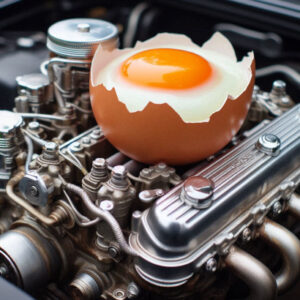Battery production for the automotive industry is a very controversial topic. A lot of discussions are going on about the production of batteries for electric cars. Almost every journalist is writing about it, but a lot of information is simply wrong, outdated, or exaggerated. Often this is due to a lack of knowledge of the writers, or because the fossil fuel car industry has a strong interest that the correct information is not being spread too quickly. This would lead to a decrease in sold fossil fuel cars. All substances used in car batteries are frequently found on earth.
I will summarize a few facts on batteries here. I also added the references, so you can check the information. In general, I think that opinions seem more important than facts in online discussions.
It is true that manufacturing a battery-electric car produces more CO2 emissions than manufacturing an equivalent fossil-fuel vehicle. It is about 15% to 68%.1https://cleantechnica.com/2018/02/19/electric-car-well-to-wheel-emissions-myth/
Elements used in batteries
Some interesting facts on elements that Tesla uses in its batteries for electric cars are the following:
- Tesla uses Nickel-Cobalt-Aluminum (NCA) batteries. The exact composition used is LiNiCoAlO2.
- Only about 1.1% of a Tesla Model S battery pack consists of lithium. This is 5 kg in a 70 kWh battery, weighing about 453 kg.2https://batteryuniversity.com/index.php/learn/archive/is_lithium_ion_the_ideal_battery
- Only about 2.8% of a Tesla Model 3 Long Range battery consists of cobalt. Other manufacturers are using 8%.3https://ecomento.de/2018/06/04/panasonic-und-tesla-arbeiten-an-elektroauto-batterien-ohne-kobalt/ 4https://cleantechnica.com/2018/02/11/nope-cobalts-not-problem-ev-revolution-will-march/ 5https://cleantechnica.com/2018/03/04/exciting-developments-nmc-811-lithium-battery-technology/
- The Tesla Model 3 (formerly called Standard Range Plus) has a Lithium-Iron-Phosphate battery (LFP). These LFP batteries are nickel and cobalt free.
As you can see a Li-ion battery does not consist of lithium, with a metal cover, but most of the battery consists of steel, plastic, and copper. Lithium and cobalt are only a very small part of the battery.
All substances used in car batteries are frequently found on earth and most important: No rare earth elements are used! The most critical elements present in a battery are lithium and cobalt, because of the difficulty to mine them. However, the abundance in the earth crust of these elements is relatively high:
- The abundance of cobalt in the earth crust is 0.004%,6https://de.wikipedia.org/wiki/Cobalt#Vorkommen
- The abundance of lithium in the earth crust is 0.006%,7https://en.wikipedia.org/wiki/Lithium#Terrestrial 8https://de.wikipedia.org/wiki/Cobalt#Vorkommen
- For comparison: the abundance of copper is 0.006%.
The fact that batteries do not contain rare earth elements is very important. This way, recycling is easier and much more efficient.
Conclusion
Battery development changed a lot during the last 10 years. Cobalt is used less and less and when even more companies are investing in research and development during the coming decades, the composition and characteristics of batteries will improve even more. The latest Tesla batteries (LFP) no longer use cobalt or nickel. Especially, the statement that rare earth elements are used in batteries has been proven to be wrong!




